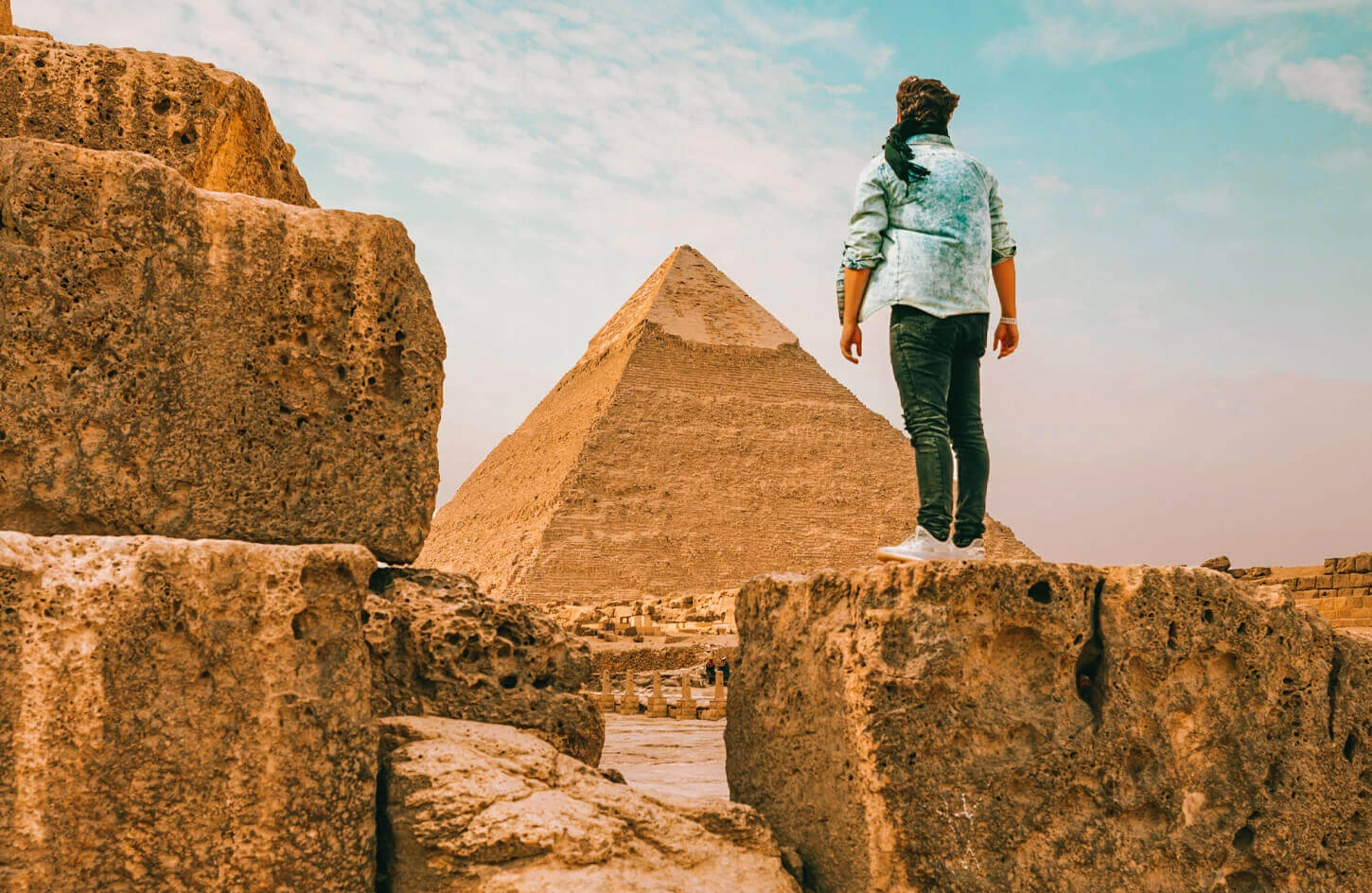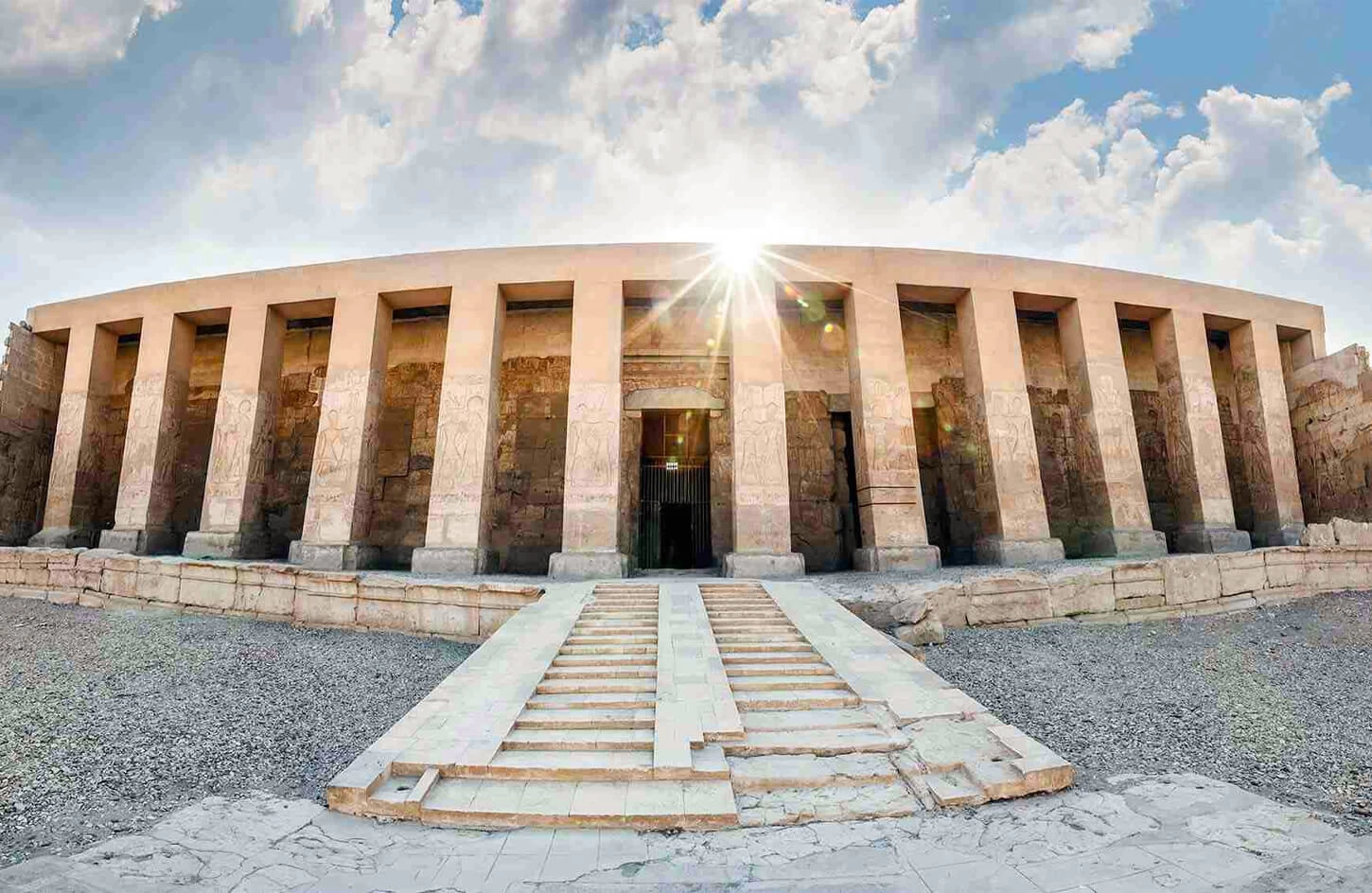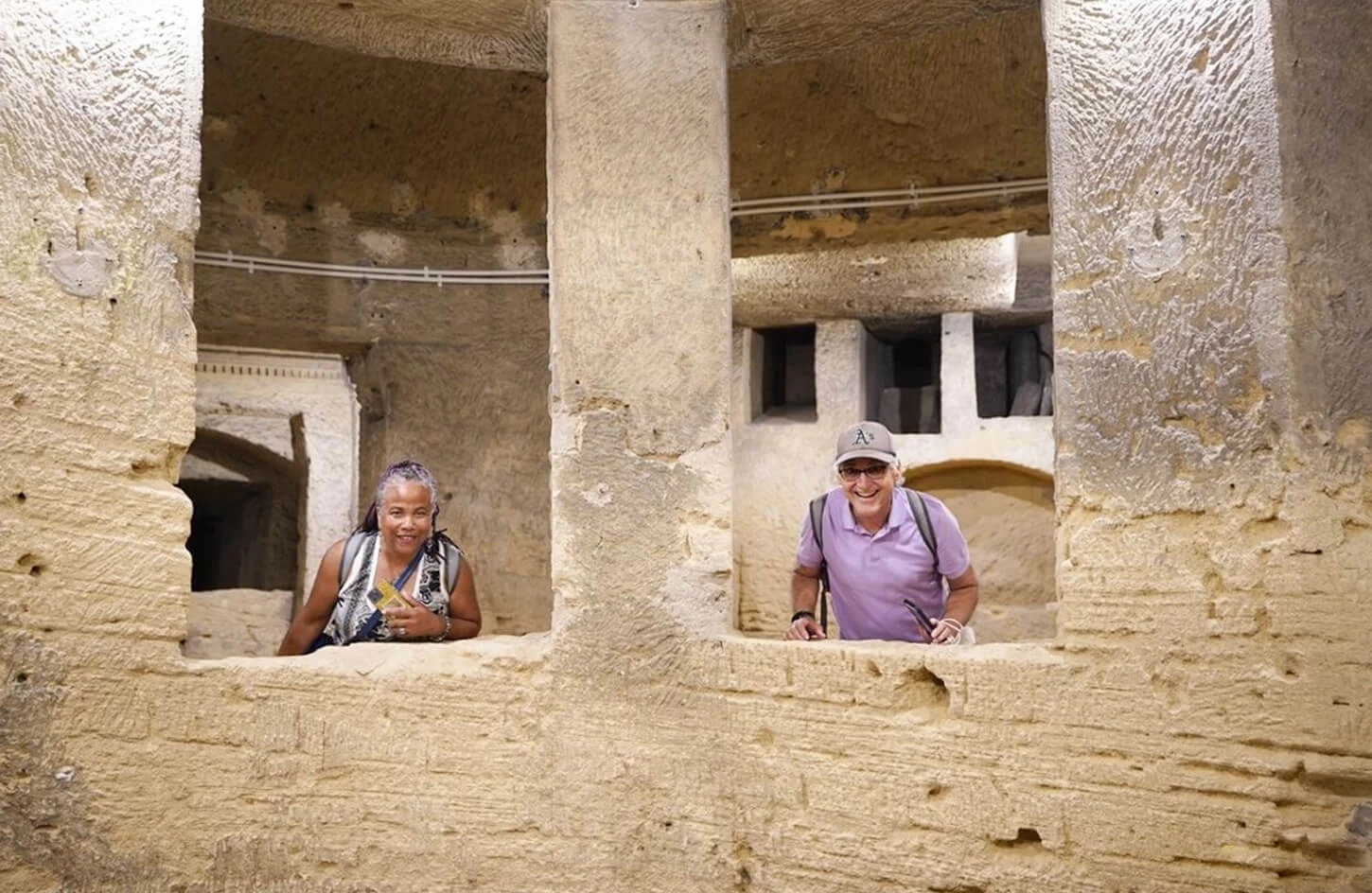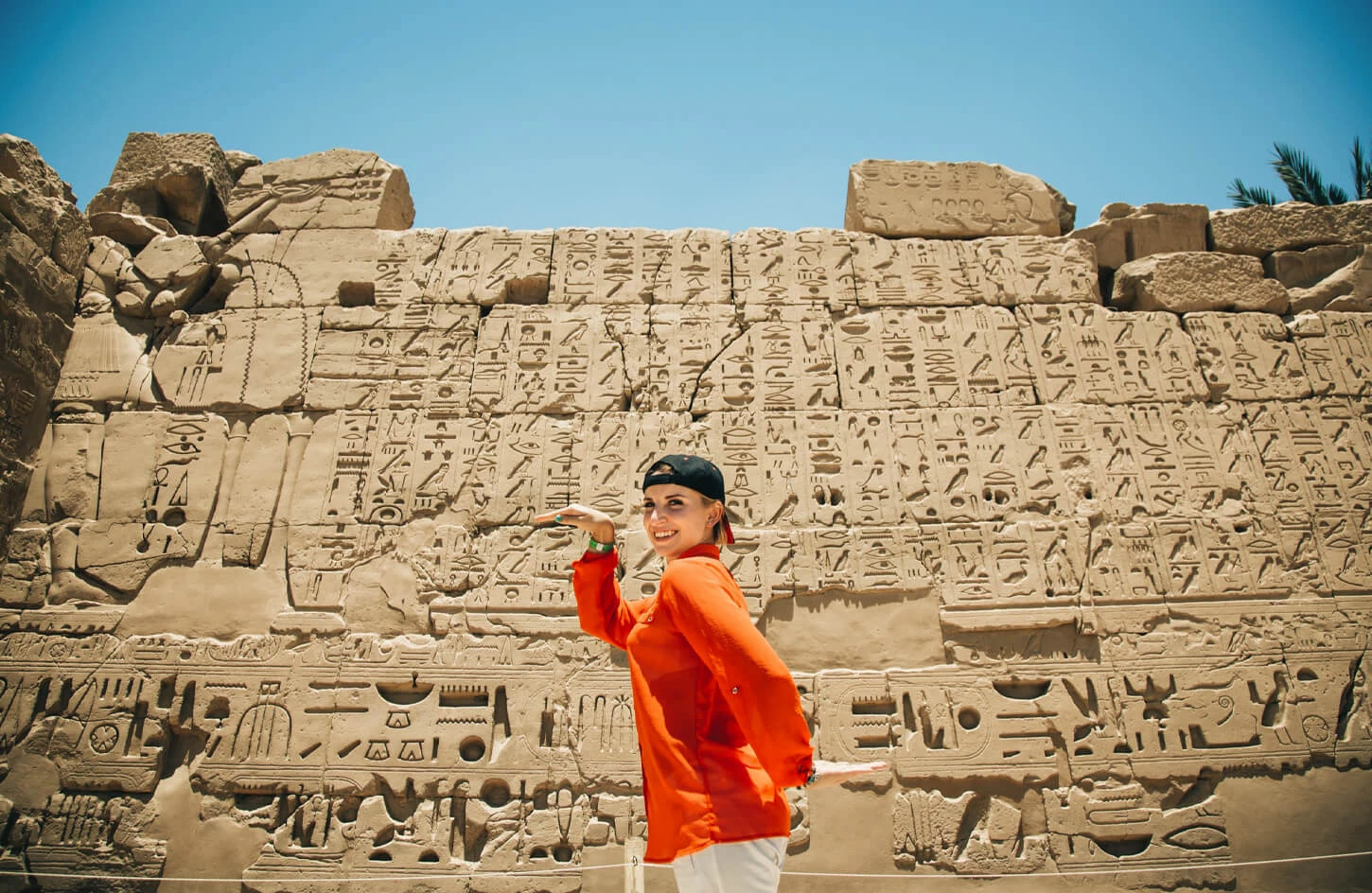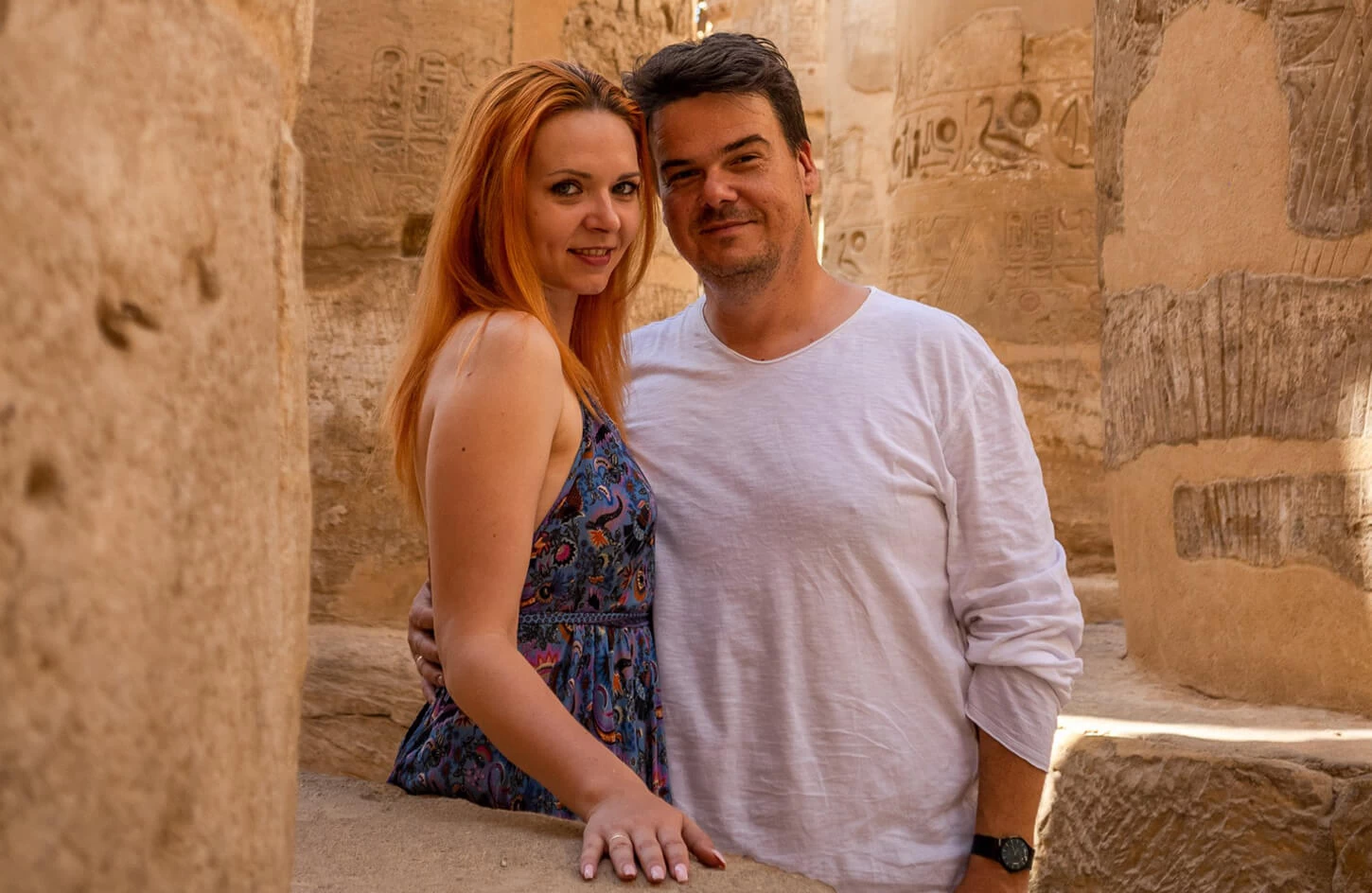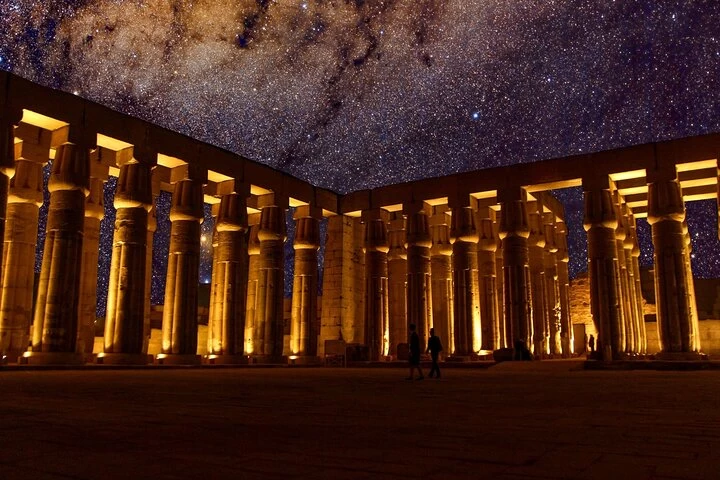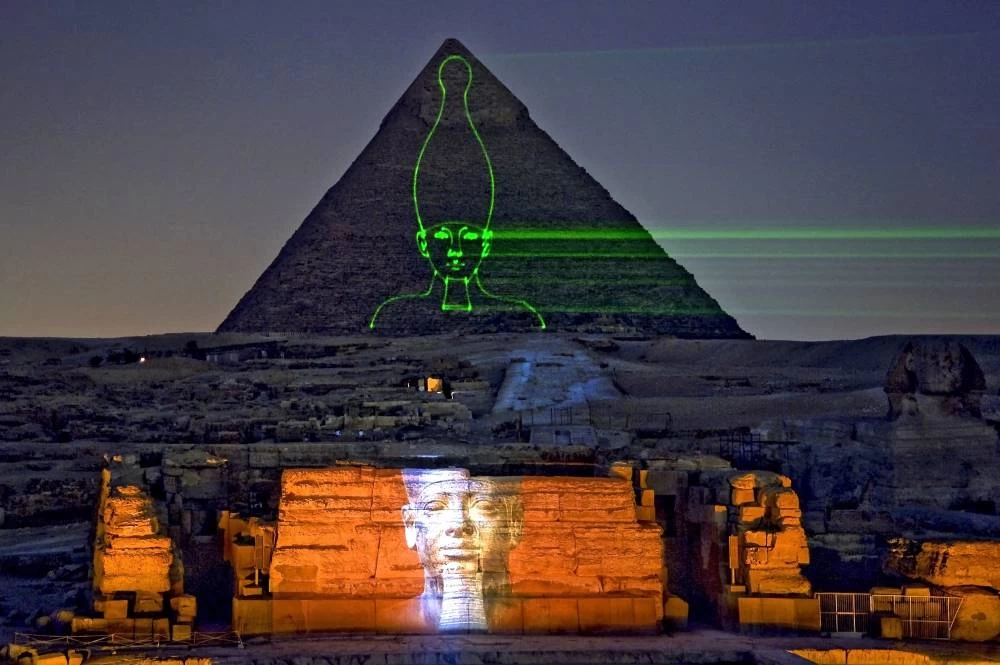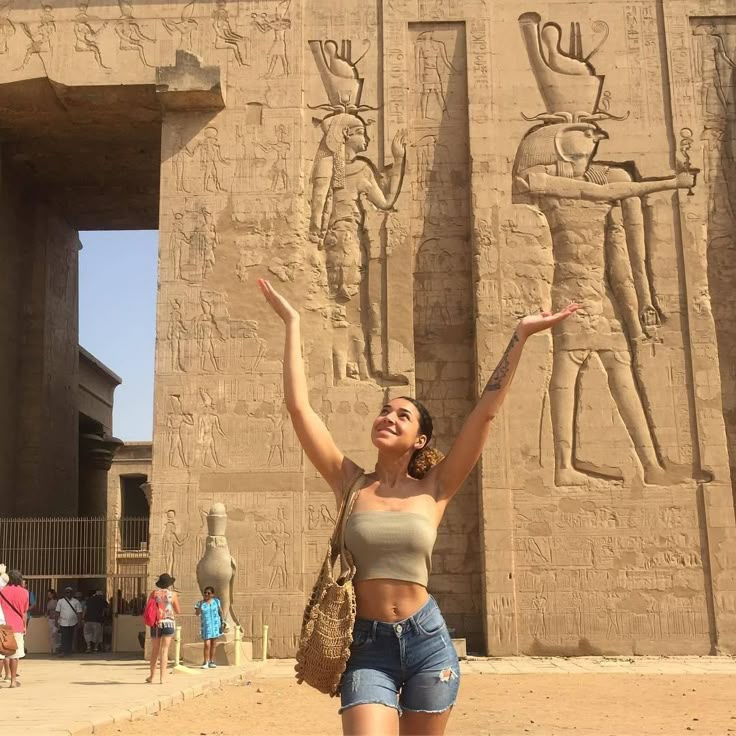Dendera Temple
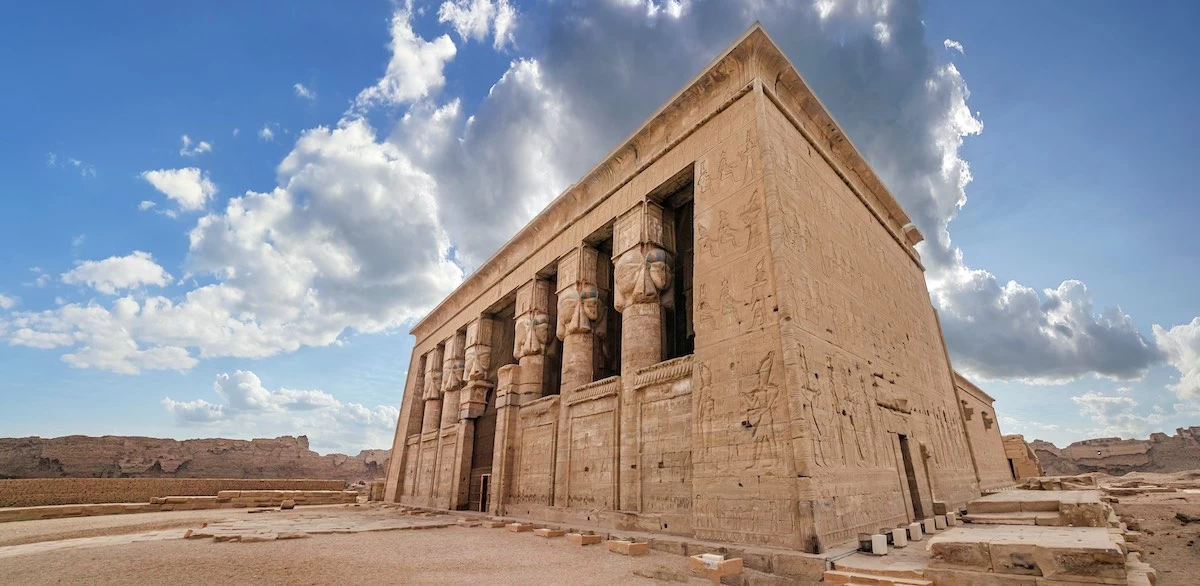
Dendera Temple location
Hathor Temple Egypt is located in the town of Dendera and must-visit temples in Egypt, approximately 60 km (37 miles) north of Luxor, in Upper Egypt. It is situated on the west bank of the Nile River, near the village of Qena. The temple complex is a temple to the goddess Hathor, the goddess of love, music, and fertility, and is one of the best-preserved temple complexes in Egypt. Dendera can be reached by automobile or escorted tours from Luxor, and it has become a typical day trip for tourists visiting the region.
Dendera Temple home of the Goddess Hathor
Dendera Temple is located in the town of Dendera, about 60 kilometers (37 miles) north of Luxor, in Upper Egypt. It is situated on the western bank of the Nile River, near the village of Qena. The temple complex is dedicated to the goddess Hathor, the goddess of love, music, and fertility, and is one of the best-preserved temple complexes in Egypt. Dendera is easily accessible by car or organized tours from Luxor, making it a popular day-trip destination for visitors to the region.
The History of Dendera Temple Complex
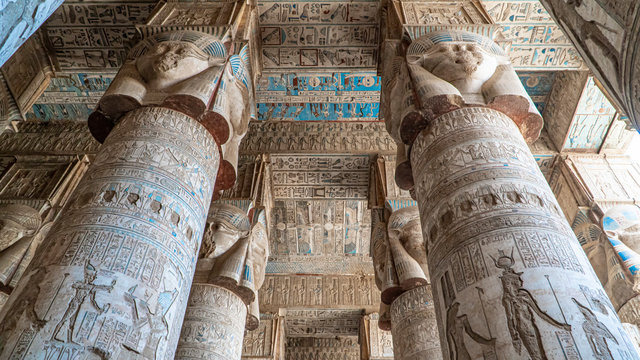
The Dendera Temple Complex best temples in Egypt, and is the best-preserved and most impressive archaeological site in Egypt , It is considered one of the most luxurious ancient Egyptian temples. and its history stretches thousands of years. Located to the south of the modern town of Dendera, it is mostly a temple complex of the goddess Hathor, the ancient Egyptian goddess of love, joy, music, and fertility. The following is the short history of the temple complex:
1. Origins and Early History
The Dendera Temple Complex originated in antiquity, though the temple itself was inhabited for cult use as early as the Old Kingdom (c. 2686–2181 BCE). It is evident that the temple was initially constructed during this time, but the current structure was built mainly under the Ptolemaic and Roman dynasties.
2. Ptolemaic and Roman Construction
Ptolemaic Period (c. 305–30 BCE): The Hathor Temple Egypt , the heart of the Dendera complex, was built mainly during the Ptolemaic Dynasty, during the reign of Ptolemy VI (c. 180–145 BCE). The Ptolemies were Greek Macedonian rulers of Egypt after the death of Alexander the Great. The Ptolemies upheld most of Egypt's conventional old religious customs and sponsored magnificent building projects, like the temple at Dendera.
Roman Period (c. 30 BCE – 395 CE): After Egypt became a Roman province, the Romans also made additions to the site. The temple's roof, for instance, was completed under Roman rulers, and Roman-style reliefs also decorated the central shrine. This brings us to the final phase of construction and decoration.
3. The Design and Purpose of the Temple
Temple of Hathor at Dendera was a vast religious complex dedicated to the goddess. The temple was built to symbolize cosmic order and was the place of religious ceremonies, festivals, and rituals for Hathor's role in creation and the sustenance of the cosmos. Temple architecture is typical of Egyptian temple magnificence, with:
A grand hypostyle hall: It is held up by numerous columns, topped with beautifully well-preserved reliefs of Hathor and other Egyptian gods.
Sanctuary and Crypts: A statue of Hathor was discovered in the inner sanctuary, and a range of crypts and chambers served for ritual and storage.
The Sacred Lake: A small artificial lake within the temple compound, routinely used for purification and ritual bathing.
4. The Famous Dendera Zodiac
The Dendera Zodiac, a relief of the constellations and the night sky on the ceiling, is among the most significant and well-known of the Dendera Temple Complex artifacts. These zodiac carvings, which date to the first century BCE, are some of the most significant astronomical documents in ancient Egypt. It shows the location of the sun and the moon, as well as the path of the planets, and the constellations. It is an extremely important item for the characterization of ancient Egyptian astronomy.
5. Decline and Rediscovery
The Dendera Temple Complex was gradually abandoned after Egypt was Christianized and Christianity took hold, coupled with the decline of ancient Egyptian religion. In spite of this, however, the temple complex was generally well preserved, particularly in comparison to other Egyptian temples, thanks in large part to the fact that it was in such a remote location and had not been completely dismantled over the centuries.
6. The Temple Today
Nowadays, the Dendera Temple Complex is one of the most well-preserved temples in Egypt, ancient Egyptian temples , a destination for visitors and scholars. The massive temple and its exquisite carvings offer us a window into Egypt's religious, astronomical, and artistic accomplishments of the Ptolemaic and Roman periods. The complex continues to be a centerpiece for the study of ancient Egyptian religion and culture.
A Traveler’s Guide to Visiting Dendera Temple
Dendera Temple best temples in Egypt and must-visit temples in Egypt, the most stunning and well-preserved ancient complex of Egypt, is a temple for the goddess Hathor, who was the goddess of love, music, fertility, and bliss. Located near the current town of Dendera, some 60 kilometers north of Luxor, the ancient complex opens up to the tourists a window into the past glory of the architecture and religious practices of Egypt. Here's everything you will need to make the most out of your tour Luxor day trips :
1. Getting to Dendera Temple
Location: Dendera is about 60 km (37 miles) north of Luxor, on the west bank of the Nile River, near the town of Qena. It is readily accessible by road or taxi from Luxor in 1 to 1.5 hours.
By Taxi: The most common way of reaching the temple is by taxi from Luxor. Reserving a return taxi or even a private chauffeur for convenience would be a good idea.
Guided Tours: Some of the Luxor tour operators organize day trips to Dendera, as part of a larger itinerary visiting other sites of interest like Abydos or the Karnak Temple. A guide will allow you to see why the temple is of such historical significance.
By Boat: Or you can even go to Dendera by boat, a peaceful experience of the Nile cruise and views.
2. Best Time to Visit Dendera Temple
The best time to visit: Early morning or late afternoon is the best time as the site itself heats up during the afternoon. You can avoid the sun and crowds by going early in the morning.
The best time for a Luxor day trips : From October to April is the optimal time to visit as the summer in Egypt (May-September) is extremely hot.
3. Most Popular Attractions of Dendera Temple
Temple of Hathor: The crowning glory of the Dendera Temple Complex, this stunning temple is a temple dedicated to Hathor, the goddess of music and love. It is famous for its relief, which is exceptionally well-preserved, and delicate carvings.
Elegant Reliefs: The walls of the temple contain exquisite hieroglyphs and reliefs, such as images of Hathor, Ramses II, Cleopatra VII, and gods and pharaohs. The reliefs are intact and colorful, providing a glimpse of the religious life of ancient Egyptians that is seldom encountered.
The Dendera Zodiac: The Dendera Zodiac appears on the ceiling of the main hall and is a magnificent astronomical depiction of the night sky. The famous relief shows the stars, constellations, and celestial bodies of ancient Egypt during the first century BCE.
The Hypostyle Hall: The giant temple hall is supported by numerous high pillars, each one of which is beautifully decorated with portraits of gods, pharaohs, and heavenly bodies. The hall is spacious and provides an idea of the splendor of the temple.
Sacred Lake: There is a small peaceful lake within the temple complex, which was used for purification rituals in the past. It's a peaceful spot to sit and take in the views around.
The Roof of the Temple: Visitors can also access the roof of the temple for a panoramic view of the complex and the surrounding area. The view from the top offers a chance to appreciate the architectural layout and the nearby landscapes.
4. What to Bring
Water: Egypt's sun can be intense, so bring plenty of water to stay hydrated during your visit.
Sunscreen and Hat: Protect yourself from the intense sun with sunscreen and a hat, since much of the temple complex is unshaded.
Comfortable Shoes: The rough grounds and temple stairs require comfortable and supportive shoes for walking.
Camera: The ceilings, reliefs, and scenery of the temple offer great photo opportunities, so don't forget to leave your camera or smartphone behind.
5. Entrance Fees and Opening Hours
Entrance Fee: The Dendera Temple entry fee is subject to whether you're traveling as an individual or as part of a guided group tour. Take a peek with local authorities or your tour guide for the current prices.
Opening Hours: The temple opens most days between about 8:00 AM and 5:00 PM. It's best to double-check the opening time in advance as it could change seasonally or on public holidays.
6. Nearby Attractions
Dendera is also not too far from other prominent Egyptian sites, so it is easy to go there along with other sites:
Abydos Temple: One hour's drive from Dendera is the Abydos Temple, Egypt's holiest religious temple, Osiris' temple. The temple contains the well-known Abydos King List, the pharaoh list of the 19th Dynasty.
Luxor: Dendera is roughly a 1 to 1.5-hour drive from Luxor and is therefore a perfect day trip from Luxor. While in Luxor, do not forget to visit the Karnak Temple, the Valley of the Kings, and the Temple of Hatshepsut.
7. Tips for Visiting Dendera Temple
Hire a Guide: Although the temple is easy to navigate without a guide, having an educated guide present will make your experience much richer. The guide will put context to the reliefs and help interpret the history and meaning of the temple.
Avoid Crowds: Attempt to visit early in the morning to avoid the tourists, particularly during peak season.
Respect Local Customs: As with any Egyptian temple, be respectful of the place and its significance. Avoid loud behavior, and dress modestly.
Photography: Photography is normally allowed, but make sure to ask about any restrictions, especially for sensitive areas like the sanctuary of the temple.
8. Travel Tips
Safety: Dendera and the local area are quite safe for tourists, but as with any holiday, be sensible and keep your wits about you.
Currency: Carry Egyptian pounds (EGP) for small purchases. Credit cards will work at most places, but it is always a good idea to carry money for small traders.
The Connection Between Cleopatra and Dendera Temple
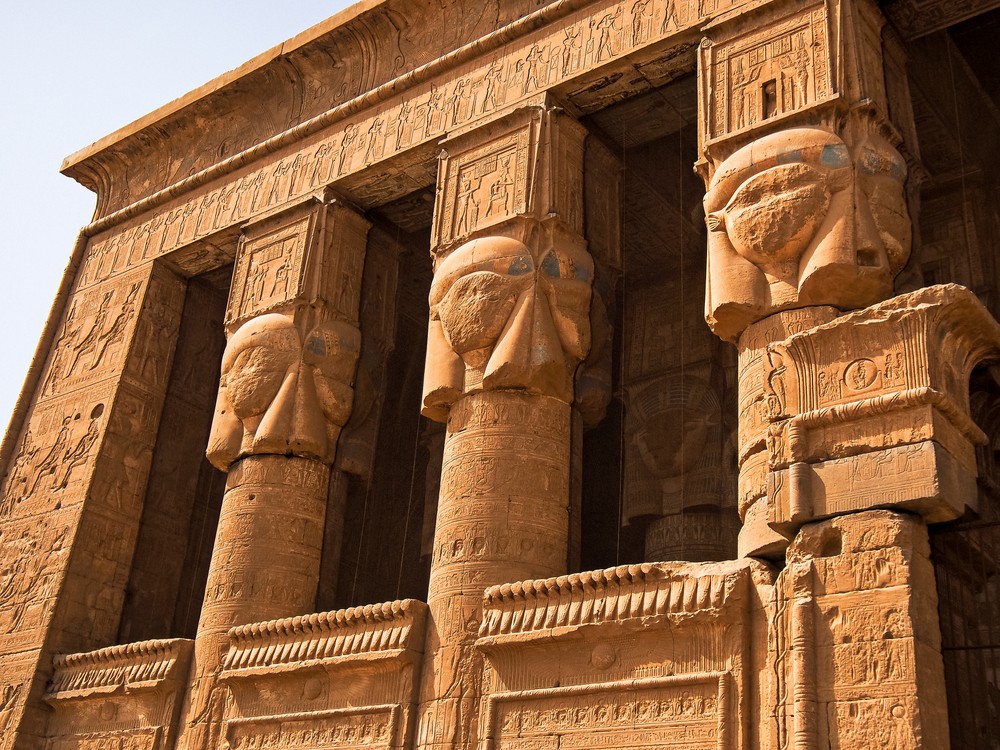
The connection of Cleopatra with Dendera Temple is primarily in the Ptolemaic Dynasty, when Cleopatra VII, the last active reigning Ptolemaic ruler of the Ptolemaic Kingdom of Egypt, was reigning. The Dendera Temple of the goddess Hathor is famous for its fine state of preservation and association with some of the most well-known people of the Ptolemaic era, among whom is Cleopatra.
How Cleopatra is connected to Dendera Temple?
1. Cleopatra's Royal Bloodline and Ptolemaic Dynasty
Cleopatra VII, ruling from 51 BCE to 30 BCE, was a Ptolemaic king, a Greek royal dynasty that ruled Egypt following the death of Alexander the Great. The Ptolemies followed Egyptian religious ceremonies and built several temples in honor of Egyptian deities and goddesses. Dendera Temple was among the most significant temples built and decorated during the Ptolemaic period, although its construction involved several rulers.
2. Cleopatra's Contribution to the Temple's Construction
Although the base of the temple was already built in the Ptolemaic period, the majority of the construction was completed during Ptolemy VI (c. 180–145 BCE). Cleopatra VII and her father Ptolemy XII are, nonetheless, reported to have undertaken further restorations and expansions to the complex. Because Cleopatra was an Egyptian queen, she would have assisted in sponsoring temples to the deities such as Hathor as part of an effort to legitimize and popularize herself among Egyptian citizens.
3. Cleopatra's Role in Egyptian Culture and Religion
Cleopatra was interested in identifying herself with Egypt's religious and cultural traditions as a way of acquiring her authority and identifying with Egyptian citizens. She practiced Egyptian cult veneration of gods and took titles that recognized her as the goddess Isis and divine pharaoh. This religious connection would be a reason for her visit to the Dendera Temple, constructed in honor of Hathor, the most important of Egyptian deities, representing love, joy, and fertility. Hathor was also a music, dance, and festival goddess — traits which Cleopatra may have desired to highlight throughout her reign.
4. Cleopatra's Relief in the Temple
There are reliefs in the Dendera Temple of Cleopatra VII and Caesarion, her son with Julius Caesar. The reliefs are part of the Ptolemaic tradition and highlight the royal family's identification with the temple. In the sculptures, Cleopatra is typically depicted as a significant figure in Egyptian religious matters. Her identification with the temple underlines her effort to present herself as a rightful Egyptian queen, performing rituals that adored the Egyptian gods.
5. The Dendera Zodiac
The most renowned aspect of the Dendera Temple is perhaps the Dendera Zodiac, the relief of the night sky and the constellations, which is thought to have been made in the Ptolemaic era, possibly under Cleopatra's rule. The zodiac was of astrological and astronomical interest, and while Cleopatra's direct involvement in its creation is not known, it indicates the cultural and scientific significance of the temple during her time. The Dendera Zodiac is the most important of the few surviving ancient Egyptian astronomical and astrological relics, and Cleopatra's support of the arts and sciences would have promoted such activities.
6. Cleopatra's Cultural and Political Strategy
In her reign, Cleopatra used religious symbolism and monuments to support her political ambitions, especially due to Roman pressure. With commissions at temples like Dendera, Cleopatra was able to reaffirm her hold in Egypt while identifying herself with the old Egyptian gods. The fact that Cleopatra's image and the temple architecture were aligned to show that she was divine indicates the connection between her political ambitions and Egypt's sacred spaces.

